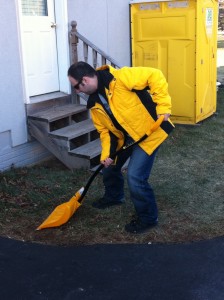As spring and summer are approaching, we begin to get back to our gardening. While gardening, many people develop back injuries due to improper body mechanics. Therefore, listed below are tips to decrease the likelihood of a back injury this gardening season.
- Before gardening, take a 10 minute walk or warm up with some light exercises to warm up your muscles.
- While shoveling, remember to bend at your knees and hips, not at your waist.
- When you empty a shovel full of mulch or dirt, make sure you pivot your feet while turning your upper body.
- Sit or kneel on a small stool or bucket while weeding and planting so you are not bending over. Use knee pads to kneel to avoid pressure on your knees.
- Switch jobs every 30 minutes and take a break every 15 minutes.
- Working on raised beds is less strenuous for your back because you are not bending over as much.
- Use a cart or wheelbarrow to move things.
- Use lightweight hoses for watering.
- Keeps loads light. Buy smaller bags of dirt and mulch. They might be more costly but they will save your back.
- Use ergonomic tools for pruning and planting. Buy long handled tools so you don’t have to reach as far.
- Keep your body straight and get under the wheelbarrow to tilt it. Stand straight while emptying the wheelbarrow.
- While mowing the lawn, keep a comfortable distance between your hands and your body.
- If you experience any pain while doing lawn work or gardening, stop.
- Do gentle stretches when you are finished gardening to prevent tightness/pain the following day.

